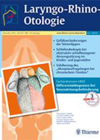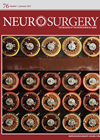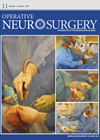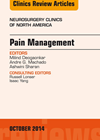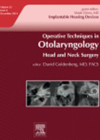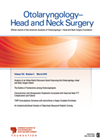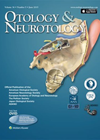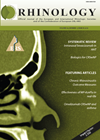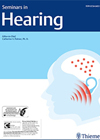
Journal Reviews archive for 2015
The Impact of sleep endoscopy for paediatric obstructive sleep-disordered breathing
Paediatric obstructive sleep apnoea (OSA) is not always resolved or improved with adenotonsillectomy. Persistent or complex cases of paediatric OSA may be due to sites of obstruction in the airway other than the tonsils and adenoids. Investigation of paediatric obstructive...
Choosing Wisely!
This article focuses on the prickly topic of healthcare costs and specifically on reducing spending on neuroimaging for headaches. Epidemiological studies indicate that the prevalence of lifetime headaches is 93 to 99% and accounts for 1.5% of all primary care...
Comparing surgical freedom of four transsphenoidal approaches to the sella
Four transspenoidal approaches to the sella were performed and studied by the authors on eight silicon-injected cadaveric heads. Surgical freedom, that is, the ability of the surgeon to move his or her hands in a fixed space, was determined with...
Argh! Facial pain! What to do??
We often come across patients with presentation of facial pain, but unless this is sinugenic in origin, our understanding and management of it can often be found wanting. Craniofacial pain is in fact highly complex and encompasses a wide range...
Experience of the Sophono transcutaneous bone conduction system
This article is a frank discussion of the authors’ experience implanting these devices. The principle of the device is surgical implantation of a bilobed magnet within a bony well in the cranium (similar position to BAHA). The implant is a...
Evidence for balloon eustachian tuboplasty
Balloon eustachian tuboplasty is an emerging intervention aimed at the management of eustachian tube dysfunction (ETD) and its sequelae. The authors acknowledge that ETD is a common but frequently ill-defined problem, with no well-established direct treatment. They performed a systematic...
When should we decompress the facial nerve in Bell’s Palsy?
It has been over three decades since Fisch popularised facial nerve (FN) decompression for Bell’s Palsy. Studies further exploring this have been few since, partly due to the major complications that can occur following this type of surgery. The current...
The effect on taste buds due to severing of the chorda tympani nerve
The long-term histological effect on taste buds following cutting of the chorda tympani in humans is not clear. Confocal laser scanning allows in-vivo examination of the same group of taste buds and is aiding our understanding of why patients recover...
Consider PCR testing in culture negative necrotising otitis externa
Necrotising otitis externa (NOE) often does not yield identification of a causative organism to treat although in 90% of cases it is a member of the pseudomonas species. The incidence of fungal NOE is not to be forgotten and this...
The association of frontal recess anatomy and mucosal disease on the presence of chronic frontal sinusitis: a computed tomographic analysis
Ostial obstruction is a primary pathophysiological mechanism contributing to sinusitis, which can be caused by anatomical variations, mucosal inflammation or both. This retrospective case series aimed to identify anatomical factors and inflammatory areas relating to chronic frontal sinusitis on nasal...
Four (more) ways to reduce turbinates
Setting aside the issue of when/if to reduce inferior turbinates, the issue of how to reduce turbinates is a never-ending story. This edition of rhinology carries two articles looking at this subject, both prospective randomised trials comparing two different methods...
Hearing aid standards and test systems
Hearing aids are the most used management / rehabilitation option for people with hearing loss. Generally, hearing instrument manufacturers perform the hearing aid performance measurements and provide its specification in terms of functionality. However, it is also common for government...

